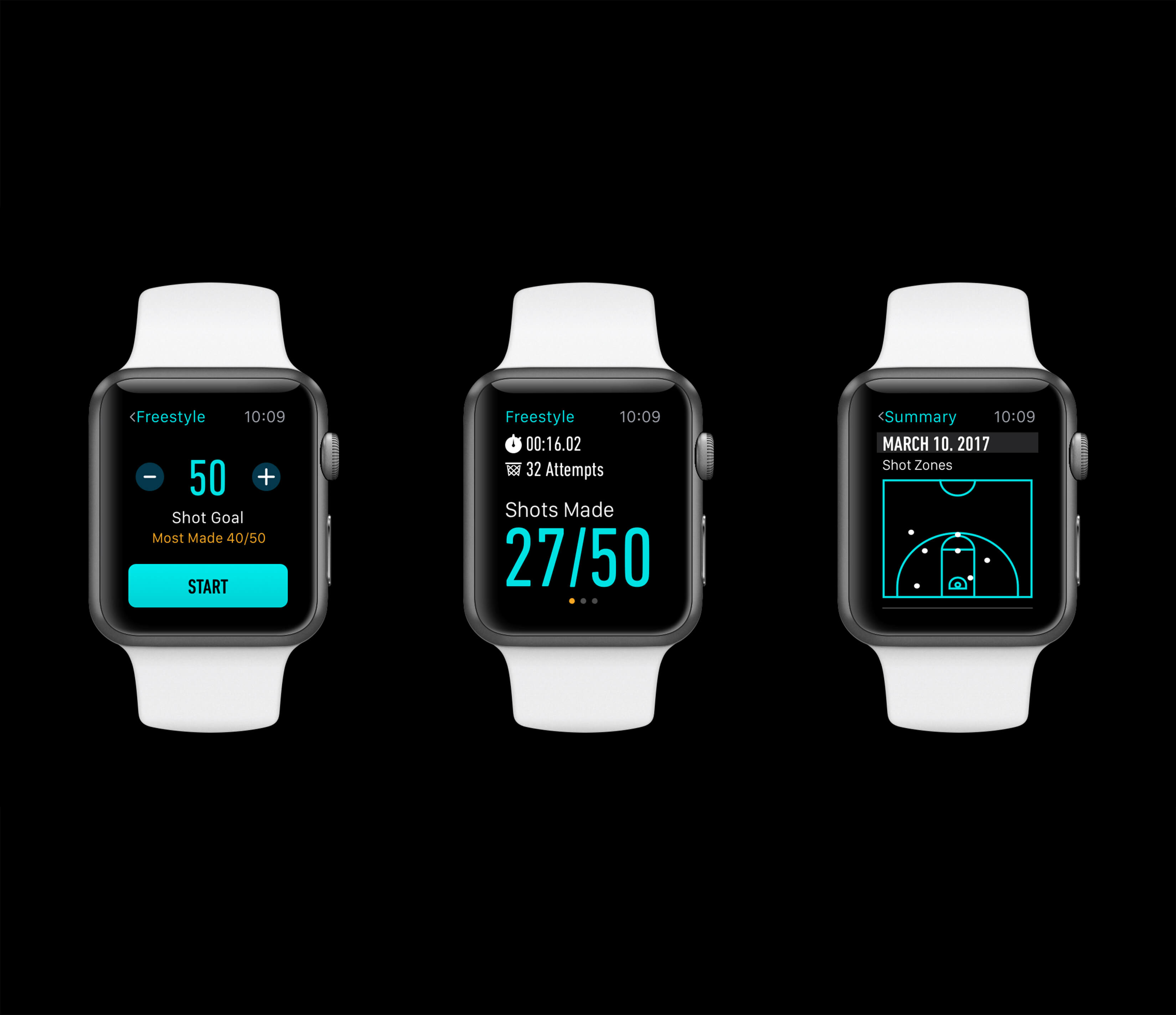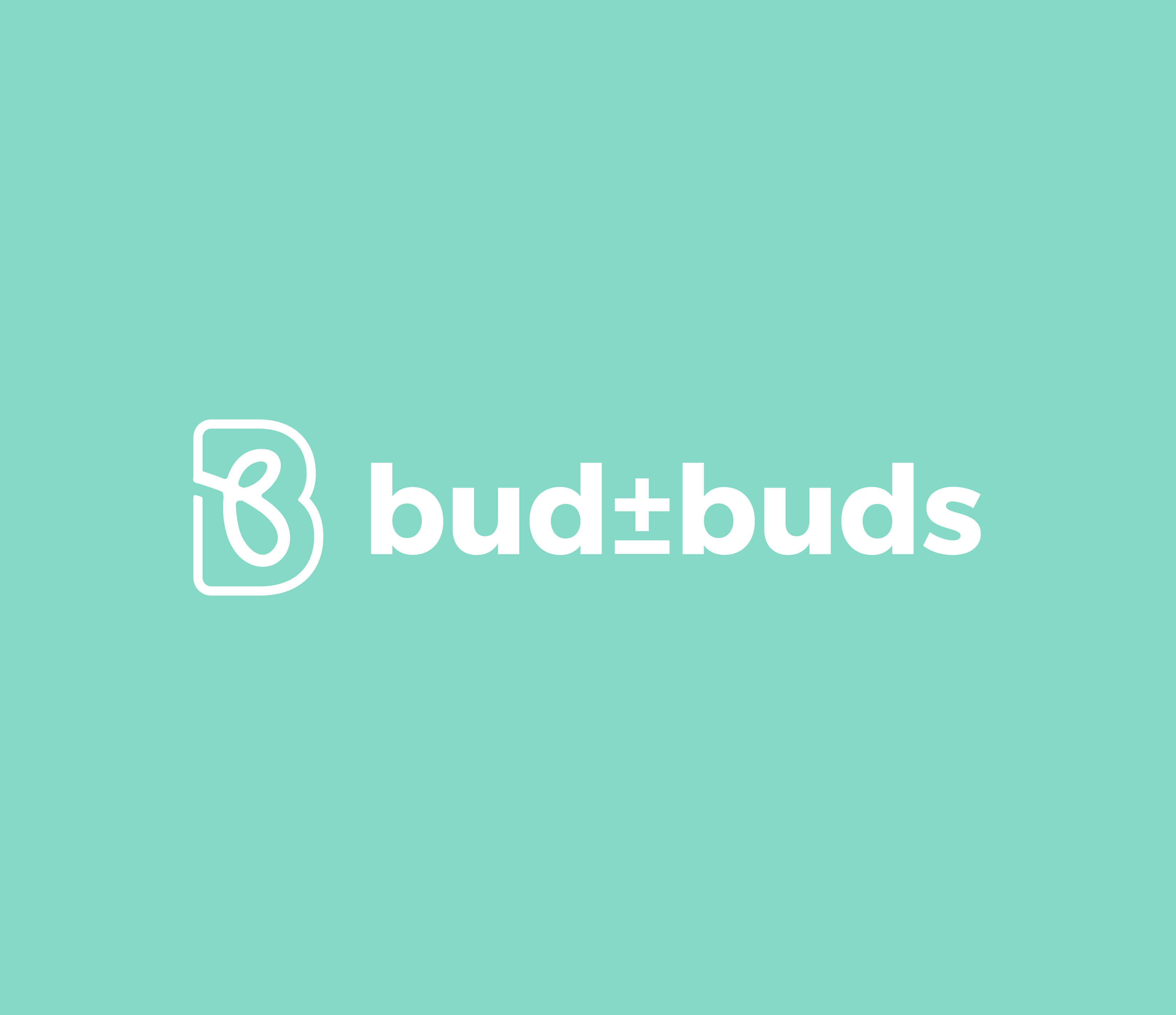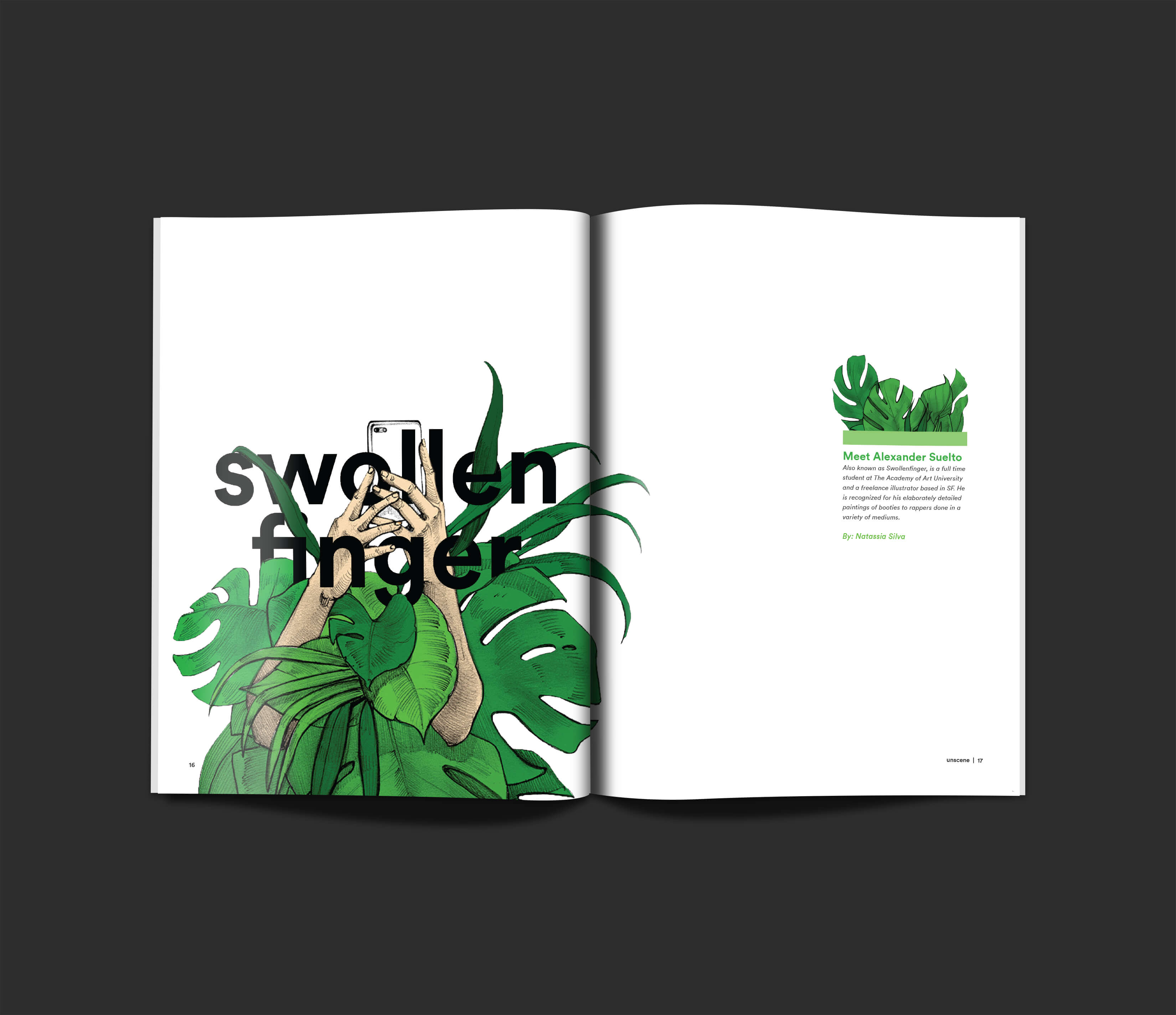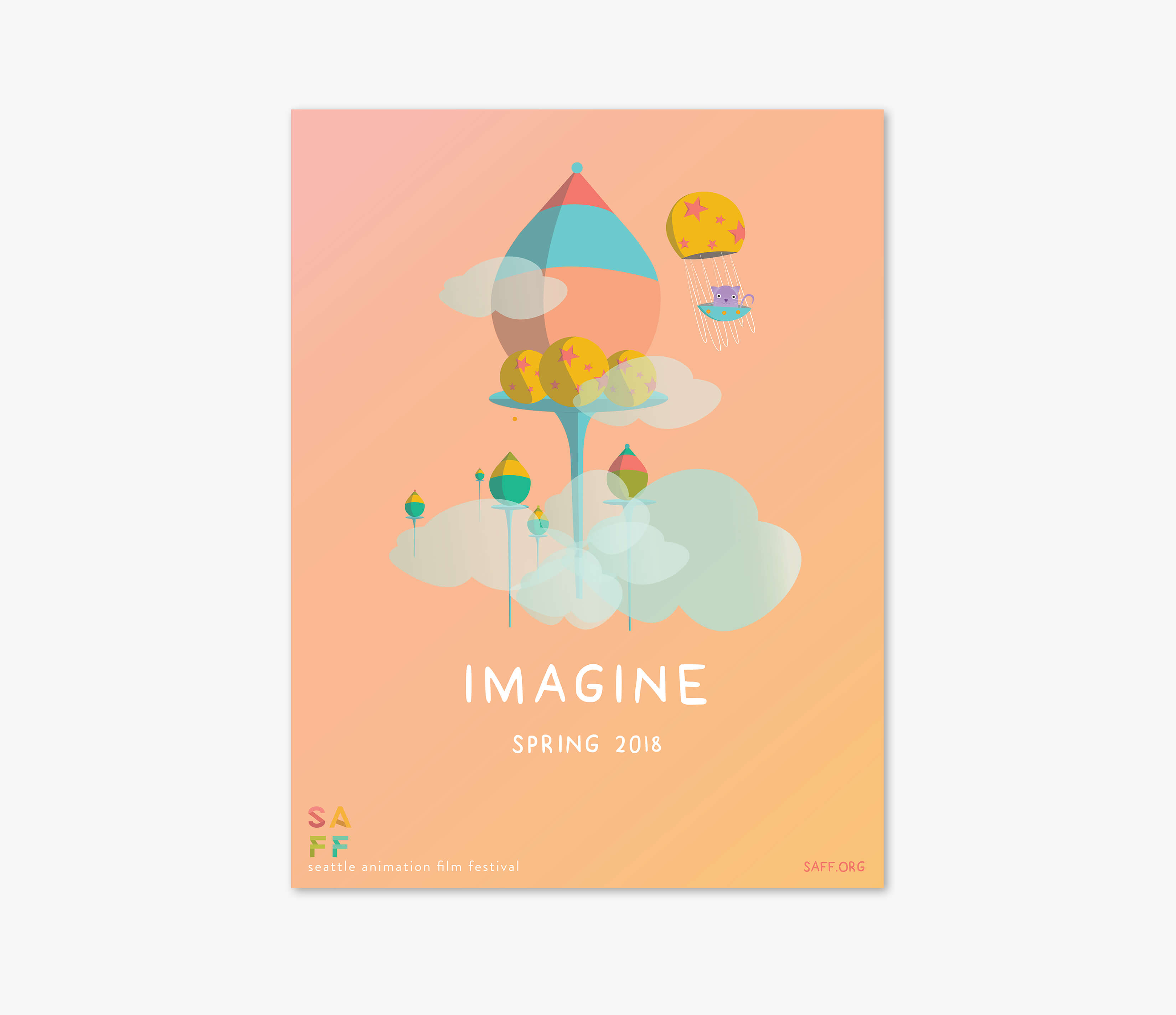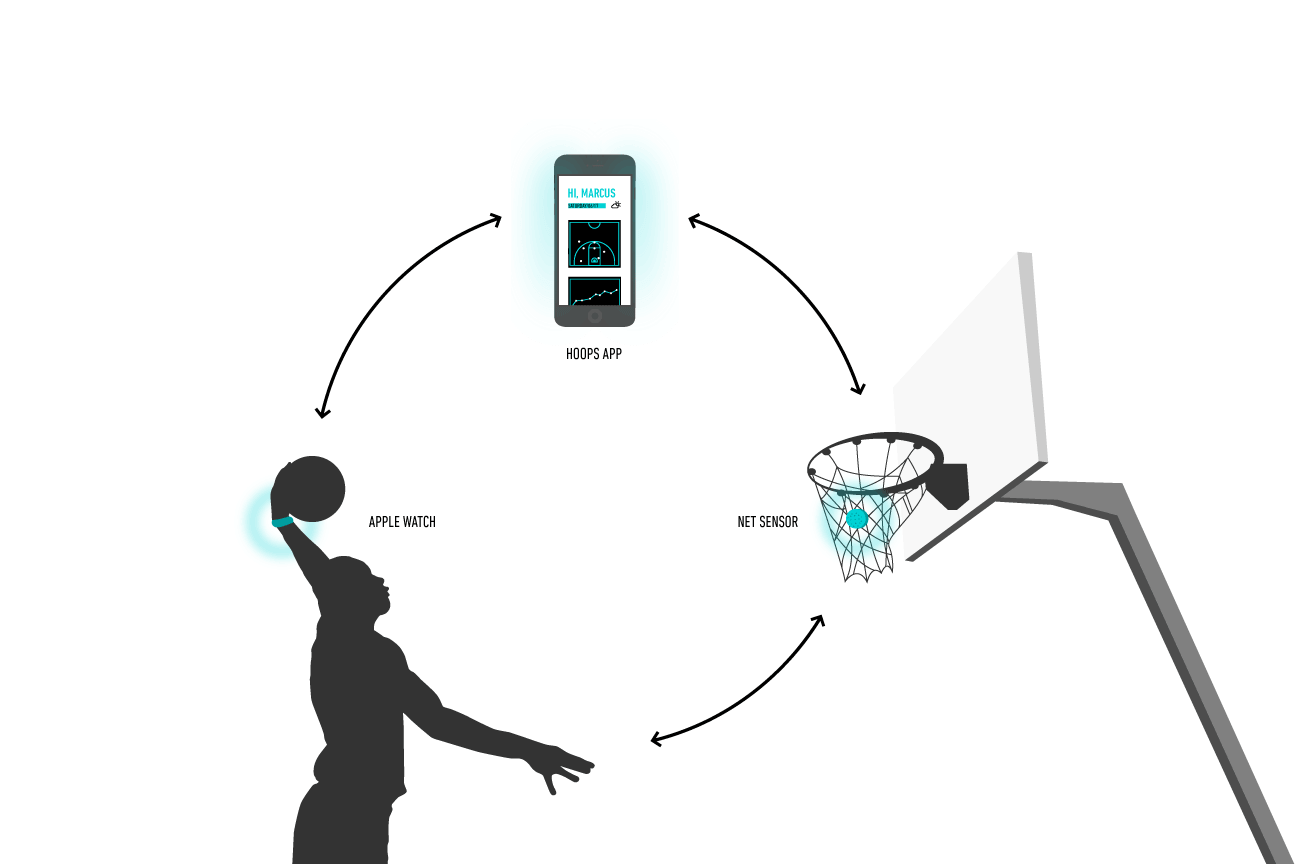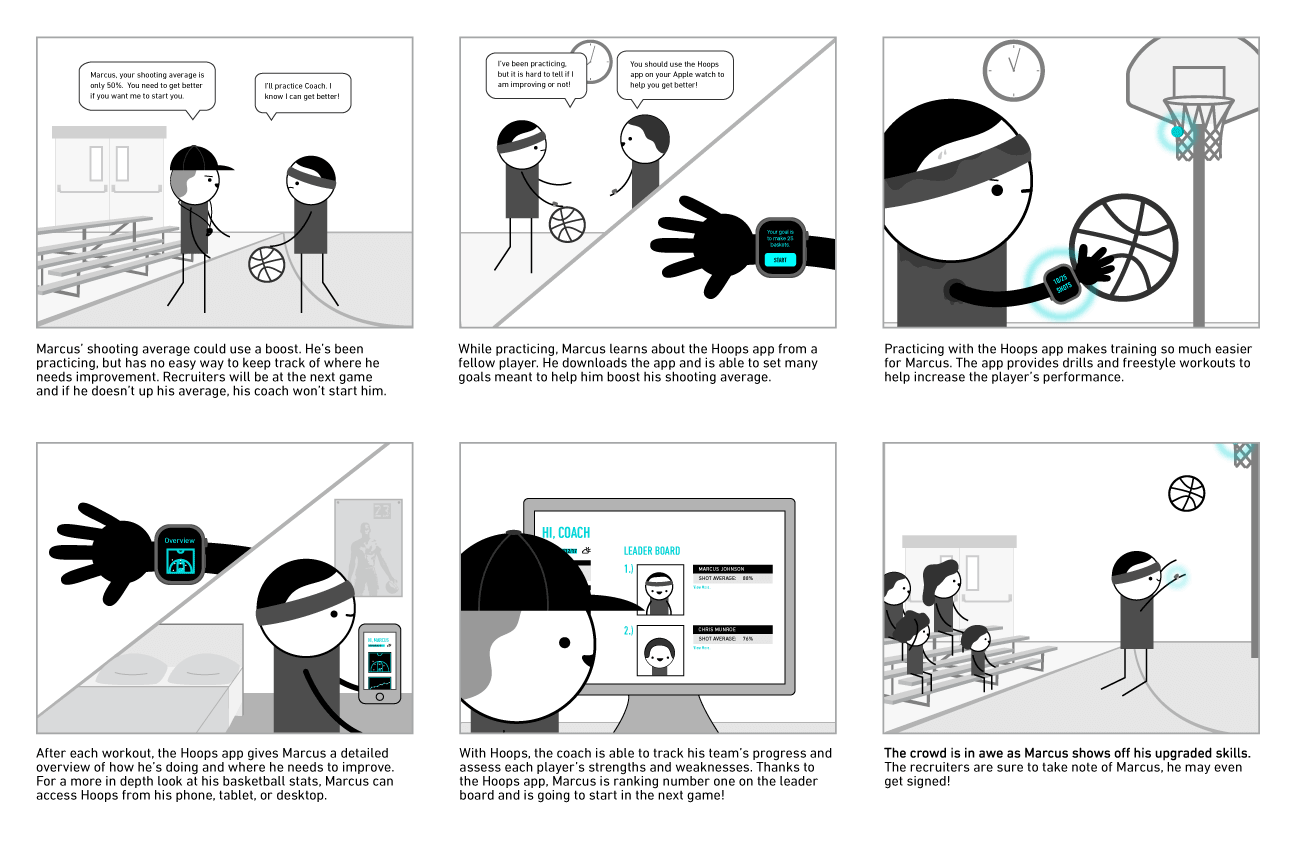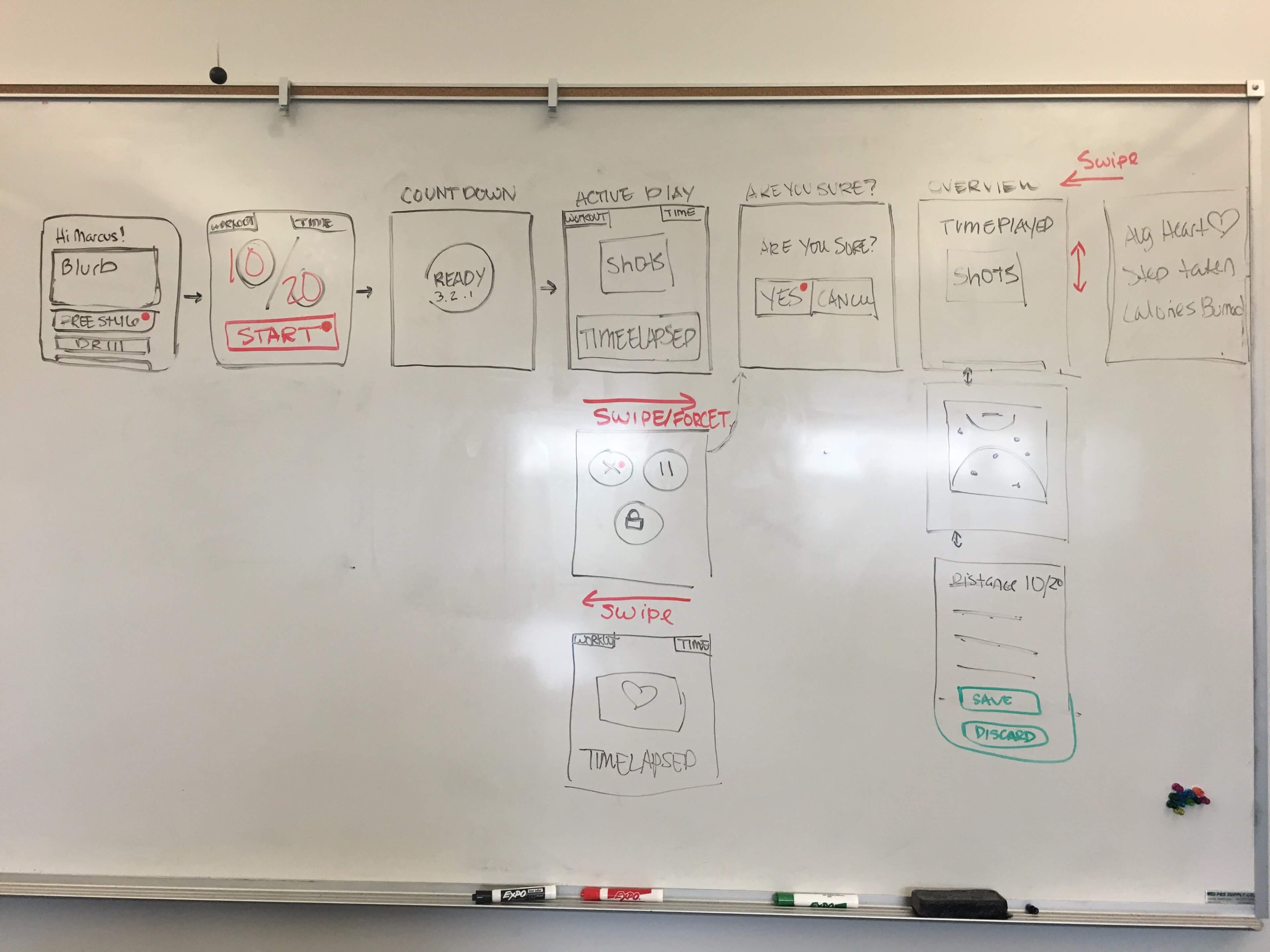Hoops
Timeline
6 weeks
Role
UX / UI
Research
Art Direction
Tools
Sketch
Marvel
Illustrator
Collaborators
Rachel Munroe


The Challenge
Playing basketball is a natural skill but you can become a good player with the right training, practice drills, and coaching. Taking advantage of exisiting shot tracking technology and the foreseeable future of smartwatches, we sought to change the way basketball players practice to improve their performance with Hoops; a basketball performance enhancing and tracking app for the Apple Watch. Our interactions with smartphones are at an average 35 seconds, and smartwatches are even shorter at 7 seconds. Our challenge is to figure out how we would be able to deliver value and enable action to our user within the limited interaction time.
The Approach
According to Gartner, between 2015 to 2017, smartwatch adoptation will have a 48% growth with an estimated sales of $11.5 billion in 2016. In addition to this data, 1 in 5 Americans report they are likely to buy the latest technology, peaking among consumers age 18-34. We researched the marketplace to discover there are many fitness mobile and watch applications but nothing specifically catering to improving as a basketball player. We surveyed basketball players and coaches to learn what our user is missing in the marketplace to generate user personas.
The Concept
Based on our research there is existing technology of basketball shot tracking devices that communicate via bluetooth to a wearable and mobile application. Brands such as ShotTracker and HoopTracker use this technology but on a lo-fi interface of their own. Our concept is to prototype a basketball performance tracking app for the Apple Watch that syncs with the existing shot tracking technology. The shot tracking device attaches to the basketball net and through bluetooth, the watch is able to detect the location of the user on the court when all shots are attempted; including freethrows, 3 pointers, missed, and completed. The app would also able to populate the data collected to show the average percentage of completed throws within the different areas of the court.
Target Segment
Men and women between 20-35 years old who play basketball at least once a week, educated, iPhone owner and invests in new technology. Resides in a greater metropolitian city and is enthusiastic about basketball, possessing the fundamentals of the sport.
Proto-Personas


Marcus Johnson
22 years old
College student at Seattle University
Marcus has been playing basketball since he was 10 years old and is very passionate about the sport. He plays point guard for the SU Redhawks men’s basketball team and rigourously practices 4x a week. With playoffs around the corner, its essential for Marcus to stay on top of his game. He’s used a Nike fuel band in the past to set fitness goals, but grew bored of the minimal features it offers. Marcus needs a tool that can assist him in becoming a better player by providing a deeper scope on his overall performance to track his record and pinpoint methods of improvement.


James Young
42 years old
SU Men's Basketball Coach
James Young has been coaching basketball at Seattle University for the past 20 years. As a former player, he understands the rigourous drills and exercises necessary to help improve their game. Coach strives to mold a strong team by giving each player personalized drills based on their needs but is limited to their practices. He needs a tool that can assist him in becoming a better coach by being able to see where his players rank amongst themselves and track the overall performance of a player to bring to his attention where improvement is most crucial.
Marcus' Goals
He wants to improve his shooting average to become a better player because he aspires to play professionally in the NBA.
He wants to know where he ranks among his teammates and see where they are lacking as a team because he naturally takes on a leadership role and be looked up to.
He wants to recieve stronger one on one coaching from Coach Young so that he can stay on top of his game and maintain his position as the starting player on his team.
Marcus' Pain Points
He doesn't have a way to specifically track his performance and know where he needs improvement on a granular level.
He doesn't know where he ranks among his teammates and the detail of their strengths and weaknesses as players to be stronger as a whole.
His one-on-one time with his coach is limited to practice court sessions at school and is unable to have his technique monitored as frequently.
Coach's Goals
He wants to provide his players personalized drills based on their individual needs because he wants each one of them to succeed as a basketball player.
He wants to know how often each player is practicing outside of regular practices because he wants to know who to start and who to help improve if needed.
He wants to be able to communicate with his players and gain their trust and respect because his team is like a family, he wants to connect with each player to their mutual benefit.
Coach's Pain Points
He is limited to only coaching scheduled practices at the gym and can provide drills for players based on their performance during games and practice.
He is only able to spot the teams' weaknesses over a course of time by physically seeing their performance patterns since there is no way for him to track each player outside of practice.
He has to prove himself trustworthy and have the ability to motivate and command a team when his players have external distractions such as social media, parties, and outside social activities.
UX Storyboard
Process
We conducted a heuristic evaluation following Jakob Neilsen's method on two mobile applications that track and log activity to find exisiting usability problems that could occur in Hoops. Based on our takeaways from the heuristic analysis, user research, and following the Apple Watch OS guidelines, we whiteboarded and sketched our lo-fidelity wireframes for our specific task flow. After much guidance and revision we were able to take our wireframes into Sketch and create a hi-fidelity clickable prototype.
User Interface + Prototype
Our prototype follows the task flow when the user is selecting a freestyle drill. In the freestyle drill it is an open time and he can set a goal for how many shots he's aiming to make. After he sets his goal, a 3 second countdown initiates before the timer starts. Throughout the user's state of active play he is able to view how many shots he made out of his goal (in this example, 50), elapsed time, shots attempted, heart rate and calories burned. To bring up the context menu to end his game he can either swipe right or activate it by force touch. At the end of the game the user is given a summary of his game that will automatically be saved to his stats or discarded at his discretion.
The Takeaway
This project was a new and exciting challenge for us. Working with a newer and smaller screen restriction forced us to really focus on how we display scale and prioritize content. With the Apple Watch, "glances" were a new user gesture we had to adapt to. We learned through many iterations the different solutions that are possible in delivering what our user needs to see in these quick glances, swipe gestures, and force touch.
While working on the watch prototype we thought about how Hoops would translate on mobile and desktop for the coaches and basketball players. With the restricted screen size and interaction time on the watch, we were cautious to keep the most salient features for the watch and allow the more granular data to speak on mobile and desktop. Seeing as the players' overview is the highlight of the app, we began the initial lo-fi and hi-fi wireframes for mobile and desktop screens that show the summary overview.
Keeping the anticipated watchOS3 release in mind, moving forward we intend to revisit our prototype and make adjustments as needed with the potential interface changes. It would also be interesting to explore the Android side of smartwatches with the Android Wear as I'm unfamiliar with the Android interface.
